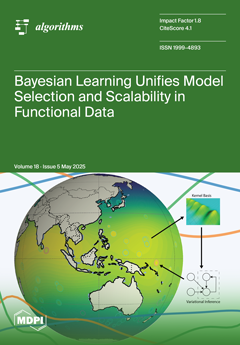Real-time tumor-tracked radiotherapy with a linear accelerator-magnetic resonance (linac-MR) hybrid system requires accurate tumor delineation at a fast MR imaging rate. Various autocontouring methods have been previously evaluated against “gold standard” manual contours by experts. However, manually drawn contours have inherent intra- and
[...] Read more.
Real-time tumor-tracked radiotherapy with a linear accelerator-magnetic resonance (linac-MR) hybrid system requires accurate tumor delineation at a fast MR imaging rate. Various autocontouring methods have been previously evaluated against “gold standard” manual contours by experts. However, manually drawn contours have inherent intra- and inter-observer variations. We aim to quantify these variations and evaluate our tumor-autocontouring algorithm against the manual contours. Ten liver, ten prostate, and ten lung cancer patients were scanned using a 3 tesla (T) magnetic resonance imaging (MRI) scanner with a 2D balanced steady-state free precession (bSSFP) sequence at 4 frames/s. Three experts manually contoured the tumor in two sessions. For autocontouring, an in-house built U-Net-based autocontouring algorithm was used, whose hyperparameters were optimized for each patient, expert, and session (PES). For evaluation, (A) Automatic vs. Manual and (B) Manual vs. Manual contour comparisons were performed. For (A) and (B), three types of comparisons were performed: (a) same expert same session, (b) same expert different session, and (c) different experts, using Dice coefficient (DC), centroid displacement (CD), and the Hausdorff distance (HD). For (A), the algorithm was trained using one expert’s contours and its autocontours were compared to contours from (a)–(c). For Automatic vs. Manual evaluations (Aa–Ac), DC = 0.91, 0.86, 0.78, CD = 1.3, 1.8, 2.7 mm, and HD = 3.1, 4.6, 7.0 mm averaged over 30 patients were achieved, respectively. For Manual vs. Manual evaluations (Ba–Bc), DC = 1.00, 0.85, 0.77, CD = 0.0, 2.1, 2.8 mm, and HD = 0.0, 4.9, 7.2 mm were achieved, respectively. We have quantified the intra- and inter-observer variations in manual contouring of liver, prostate, and lung patients. Our PES-specific optimized algorithm generated autocontours with agreement levels comparable to these manual variations, but with high efficiency (54 ms/autocontour vs. 9 s/manual contour).
Full article





